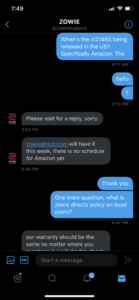dgz
Supreme [H]ardness
- Joined
- Feb 15, 2010
- Messages
- 5,838
I don't get the hate. Even PQ guys should be happy for pixel response advances which all LCDs need.
It's always the same guys coming up with the same ridiculous straw man arguments. Companies are not even marketing these screens as the best for the slow-ass games they play.
These are clearly esports monitors. But here's the thing, competitive players deserve to be looked down upon because we are all 12 year olds. This is what it boils down to.
That leaves us with trolling being the main reason for the usual vitriol.
I am not complaining, though. I guess even the glorious RPG master gamer race feels the ability to offload some baggage from time to time.
![[H]ard|Forum](/styles/hardforum/xenforo/logo_dark.png)

